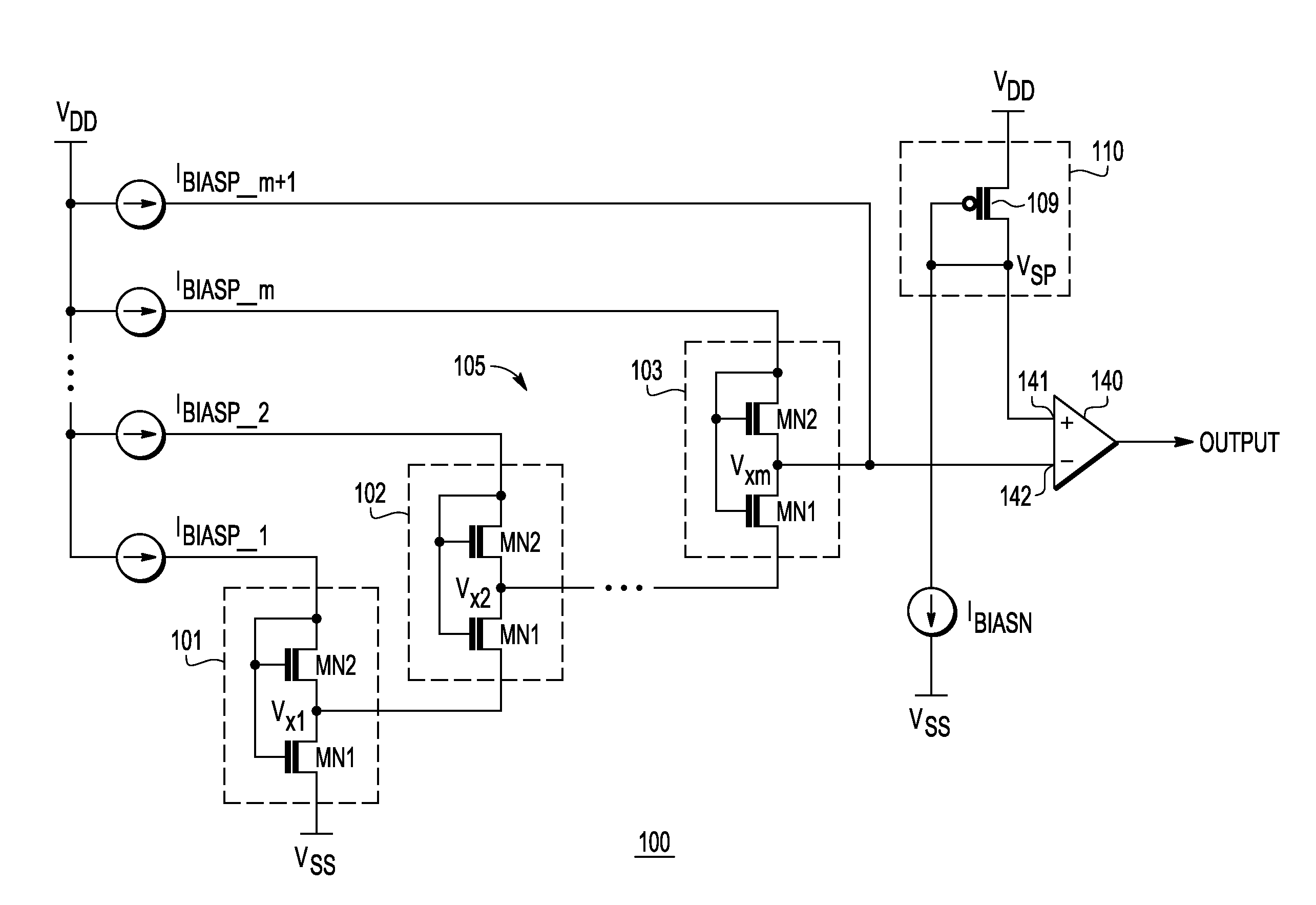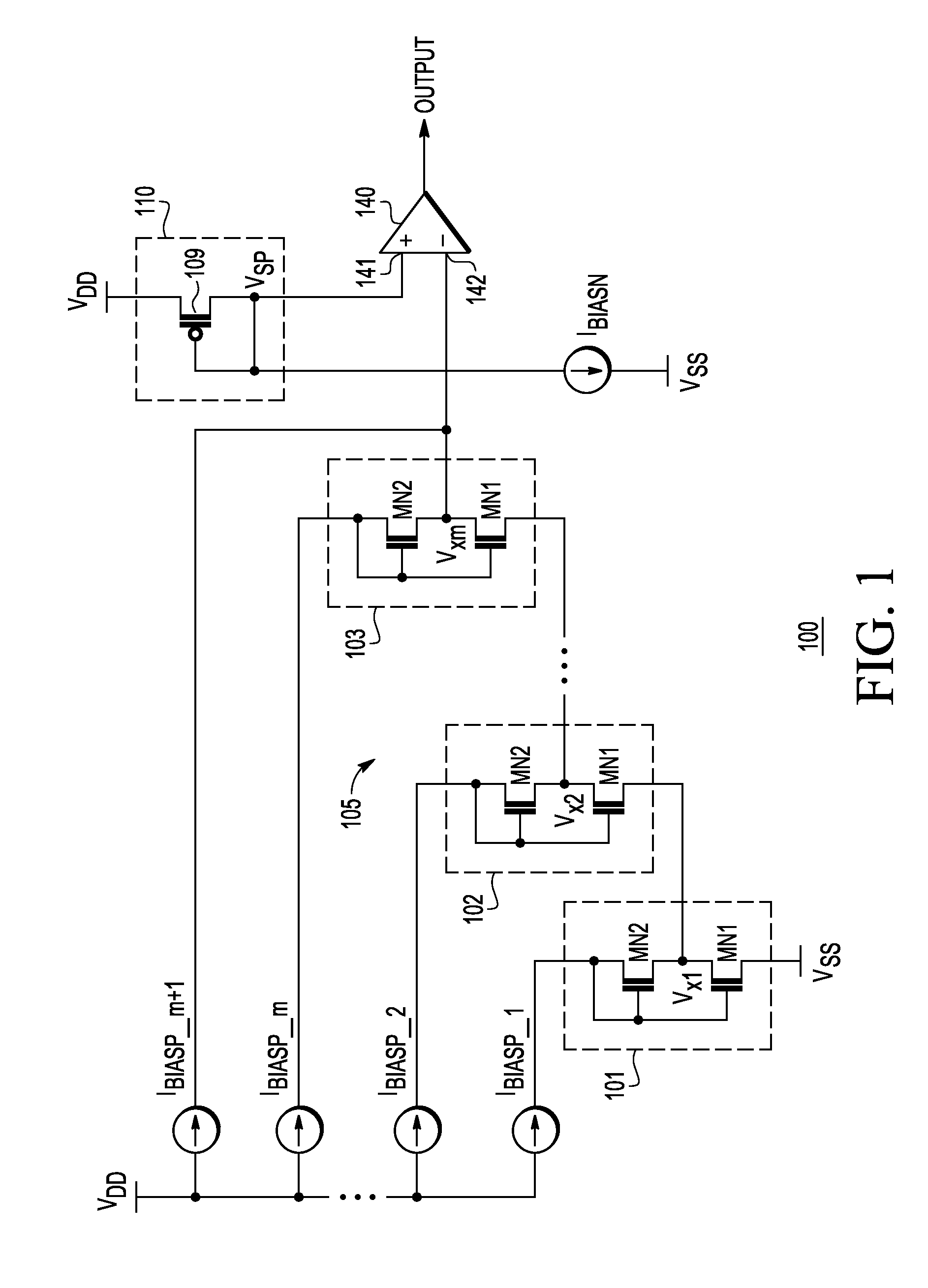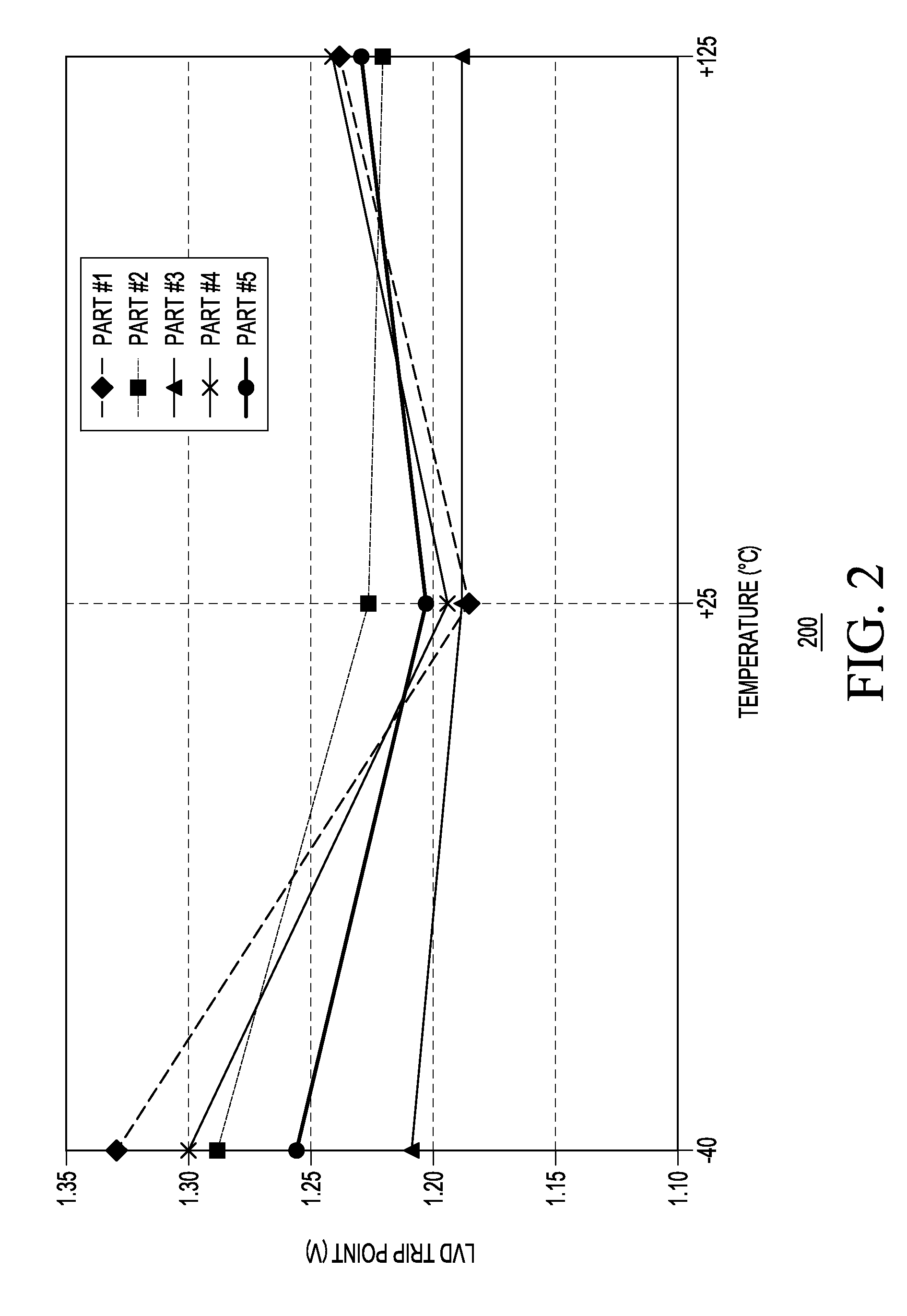Low voltage detector
a low-voltage detector and circuit technology, applied in the direction of thermoelectric instruments, electric devices, instruments, etc., can solve the problems of low-power reliability, disadvantageous occupied area of known low-voltage detectors, and low-power consumption of low-voltage detectors
- Summary
- Abstract
- Description
- Claims
- Application Information
AI Technical Summary
Benefits of technology
Problems solved by technology
Method used
Image
Examples
Embodiment Construction
[0019]FIG. 1 is a schematic of a low-power, low voltage detector (LVD) 100 in accordance with the invention, which, in some embodiments, achieves reliable low voltage detection while consuming power in a nanowatt range. The LVD 100 advantageously self-compensates for changes in its temperature.
[0020]In one embodiment, the LVD 100 comprises a proportional to absolute temperature (PTAT) voltage generator 105, a power supply voltage monitor 110, and a voltage comparator (hereinafter “comparator”) 140. In one embodiment, the comparator 140 is a low power consumption comparator. In one embodiment, the LVD 100 is disposed on a substrate of an integrated circuit. The LVD100 may be coupled to a nanowatt-range current reference that provides bias currents, IBIASN and IBIASP—1 to IBIASP—m+1, for the LVD. Besides consuming low power, such a nanowatt-range current reference should operate down to, or below, a minimum trip point of the LVD 100. In other words, if the trip point of the LVD 100 is...
PUM
 Login to View More
Login to View More Abstract
Description
Claims
Application Information
 Login to View More
Login to View More - R&D
- Intellectual Property
- Life Sciences
- Materials
- Tech Scout
- Unparalleled Data Quality
- Higher Quality Content
- 60% Fewer Hallucinations
Browse by: Latest US Patents, China's latest patents, Technical Efficacy Thesaurus, Application Domain, Technology Topic, Popular Technical Reports.
© 2025 PatSnap. All rights reserved.Legal|Privacy policy|Modern Slavery Act Transparency Statement|Sitemap|About US| Contact US: help@patsnap.com



